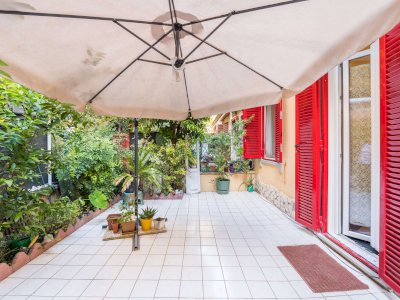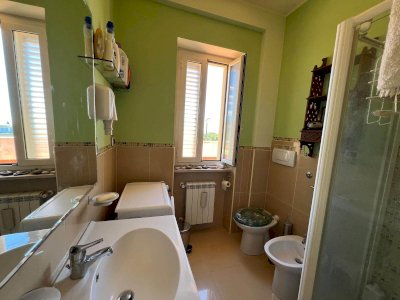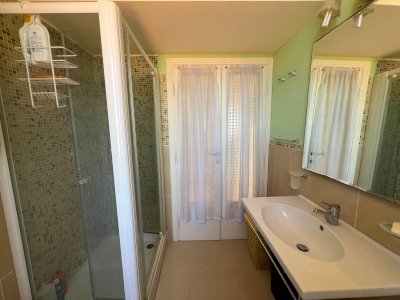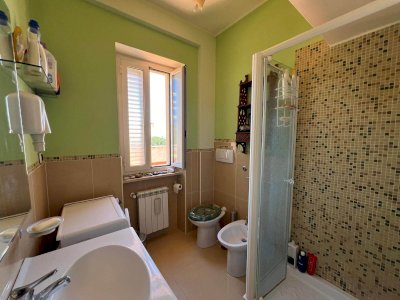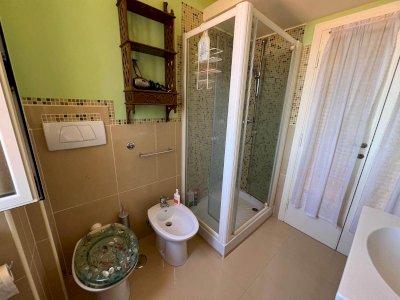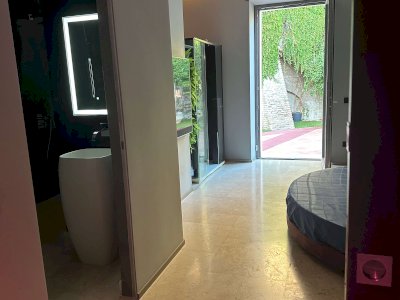Is your water pressure getting lower and lower?
Has your hot water stopped being hot?
Is water squirting out the sides of the showerhead?
Does the air conditioner not cool the room like last summer?
Have you noticed more ants around lately?
Does it take longer for the water to drain from the shower?
Does your smoke alarm keep beeping every now and then?
Do any of these problems sound familiar? I’m sure if you are experiencing any one of these, it could feel like a big mountain to climb to resolve them. But in fact, that’s not the case.
It just sounds like some household maintenance is overdue. The key here is to be proactive as opposed to reactive. If you do the following tasks 2 to 3 times a year, these little, unnecessary, annoying, stressful moments in your daily life will disappear.
This list is not the be-all and end-all of house maintenance lists, but it’s a good start.
Tap filters – clean or change
SYMPTOMS – Hot water doesn’t get so hot anymore, and/or the water pressure is low.
There is most likely a build-up of calcium and debris which blocks the filter on the tap head, therefore reducing the flow of water. The reduced flow stalls the gas boiler from igniting as they have a safety feature that stops ignition if the pressure is too low.

HOW TO CLEAN:
- Unscrew and remove the filter from the tap head. Try unscrewing by hand first, although you may need a wrench. Run water through backward which will remove any small debris.
- Screw back on.
- If the filter is really clogged, put it in a container or plastic bag of anti-calcium product (found at the grocery store or hardware store) or white vinegar and soak it overnight.
- Rinse thoroughly and reattach to the tap. Make sure to replace the plastic washers, otherwise water could squirt out the sides.
You could also just replace with new filters at a cost of €1 per filter.
This should be done once every 3-4 months or when symptoms occur.
Showerhead – clean or change
SYMPTOMS – Hot water doesn’t get so hot anymore, and/or the water pressure is low.
There is most likely a build-up of calcium and debris which blocks the filter on the tap head, therefore reducing the flow of water. The reduced flow stalls the gas boiler from igniting as they have a safety feature that stops ignition if the pressure is too low.


HOW TO CLEAN:
- Remove the showerhead from the tube by unscrewing anti-clockwise.
- Using a long screwdriver, scrape the insides of the long part.
- For the little holes on the top part use a decent size needle and slowly poke each hole. Grab a chair it could take a few minutes. You will see little white chalky bits coming out as the needle is removed. Then get an old toothbrush and give a little scrub.
- Then in a container or plastic bag of anti-calcium product or white vinegar, soak it overnight.
- Rinse thoroughly and reattach to the tube. The plastic washers in between the head and tube may need replacing if the water is squirting from the sides of the connections.
Or just buy a new one.
These days most are cheap plastic ones anyway and you can buy the kit complete with the head, tube, and plastic washers for between €10-€15. This should be done once every 2 months or when symptoms occur.
Toilet flush – calcium deposits
SYMPTOMS
- Yellow shades of discoloration are mostly spotted in the bowl and on the toilet seat.
- Blocked or clogged siphon jets stop your toilet from flushing correctly.
- An abnormally long duration for water in the tank to empty into the bowl. Low-level water in the bowl.
Siphon jets are small holes located underneath the rim of your toilet bowl. They allow the flow of clean water from the tank into the bowl whenever you flush.

HOW TO CLEAN
- Prepare a mixture of baking soda and white vinegar that tends to generate a chemical compound called carbonic acid, which is aggressive on stains and mineral deposits on surfaces. It will be an excellent remedy for this problem.
- Measure about a cup of vinegar and pour it inside the toilet bowl. Swish it around so it gets to every area in the bowl. Let it sink in the bowl for about half an hour to one hour. At the same time bring up the toilet seat and spray the vinegar underneath the rim with special attention on the siphon jets.
- After that time, open the box of baking soda and sprinkle it all over the toilet. The vinegar you added previously will ensure it sticks on the walls of the bowl. Add some vinegar to activate a fizzy reaction.
- Let it fizz for another 15 minutes, then come back and brush the interior surface of the toilet bowl. Scrub the toilet with a nylon stifle brush and rinse off by flushing. The toilet should be stain free. Don’t forget to gently scrub under the rim with an Allen wrench brush to clean the siphon jets. Move it around the rim steadily until all the dirt leaves the siphon jets. Use the mirror to crosscheck for any remaining dirt. In case there is, repeat the steps as needed until the small holes are clean.
- You can repeat this method as many times as possible. You could even leave the solution overnight to let it work through the tougher stains.
This should be done every 3-4 months or when symptoms occur. The more frequent you do it the easier the clean will be.
Hot water boiler calcium filter
SYMPTOMS – Inside the filter will have transparent water. It should be white-ish.
By the way, having one of these (anti-calcare filtro) installed just before your boiler (caldaia) will reduce your maintenance tasks somewhat, especially the tasks on this page.

HOW TO REFILL
- Turn off the boiler and the shut-off valve just before the filter to stop water from flowing. Usually, it is on top of it.
- Open and leave a hot water tap open, possibly the lowest in the house, and wait for the water to drain completely, which should finish in about ten seconds. If the hot water continues to come out, check that you have closed the correct valve.
- Try to manually unscrew the ring nut that blocks the glass containing the mineral salt. If this is not possible, use the special circular wrench. Keep a bucket nearby to catch potential spillage as you remove the filter filled with water.
- Pour the content of the descaling mineral salt into the cup until the line, or more or less half way. Place the perforated disk on top (technically called solubilizer disk which eliminates the need to mix the product with water.
- Match the salt holder glass to the dispenser, taking care to arrange the gasket and screw the ring nut simply with your hands, without using the wrench.
- Very slowly open the shut-off valve to allow a slow refill of the water with the product. Carefully check that there are no water leaks. If not, close the valve immediately and check that the gasket is fitted correctly.
- When the salt cup is full of water and the usual flow of water comes out of the hot water tap previously opened, the operation is completed successfully.
The frequency this needs to be done depends on water usage but on average every 3-4 months or when symptoms occur.
Kitchen drain
SYMPTOMS – The water takes a long time to drain, or doesn’t drain.
DON’T put acid down the drain. Some people may tell you to put acid down the drain hole but this can: eat the metal pipes away slowly but surely and burn/stain the stainless steel rim around the hole. You really need to clear the drain manually and a plumber has the specific tools to do this.


HOW TO UNBLOCK
- Plunge away the blockage. Fill the sink with hot water until it's about halfway full and creates a seal around the drain. Position the plunger over the drain and begin pumping up and down quickly several times. Remove the plunger and wait to see if the water drains. Repeat the process until the water drains freely. If the sink still isn't draining properly after multiple plunging attempt try the next suggestion.
- Break it down with baking soda and vinegar. Remove standing water from the sink, if necessary with a cup or bowl. Pour one cup of baking soda down the drain, using a spatula or spoon to push the powder down the drain if necessary. Pour one cup of white vinegar down the drain opening. Place a stopper or cover on the drain to seal the opening. Let the mixture sit for 15 minutes. Remove the cover and run hot tap water down the drain. Use boiling water to break up more intense clogs. Repeat if necessary. If this method is done regularly, before complete blockages, you should never have a complete blockage.
- Clean the P-trap - aka the elbow-shaped pipe under your sink. Place a bucket underneath the pipe. This will catch any backed up water or debris that may fall out when you open the P-trap. Unscrew the connectors on the trap that hold the curved piece to the vertical and horizontal drain pipe. There should be a slip nut on either end of the P-trap. Remove the P-trap and clean the pipe of all debris, grime, and residue. Reconnect the trap. Do not over-tighten. Run hot water to flush the drain. If after clearing the P-trap water still does not drain, you most likely have a blockage after the P-trap. Try getting a piece of sturdy wire, like a metal coat hanger to retrieve any debris. If not successful it is time to call in a plumber.
.
Shower drain
SYMPTOMS – The water takes a long time to drain, or doesn’t drain.
DON’T put acid down the drain. Some people may tell you to put acid down the drain hole but this can 1. Eat the metal pipes away slowly but surely, 2. Burn and stain the stainless steel rim around your hole. And after all that, not really work so well. You really need to clear the drain manually and a plumber has the specific tools to do this.

HOW TO UNBLOCK
- Pop-out filter. First, check if your shower has a modern pop-out filter. Using a screwdriver can help to leverage it out. Remove and clean all the gunk, hair, and soap mixed together. Here's a good video tutorial on how to do it.
- Plunge away the blockage. Fill the shower with hot water until it's about halfway full and creates a seal around the drain. Position the plunger over the drain and begin pumping up and down quickly several times. Remove the plunger and wait to see if the water drains. Repeat the process until the water drains freely. If the sink still isn't draining properly after multiple plunging attempt try the next suggestion.
- Break it down with baking soda and vinegar. Remove standing water from the sink, if necessary with a cup or bowl. Pour one cup of baking soda down the drain, using a spatula or spoon to push the powder down the drain if necessary. Pour one cup of white vinegar down the drain opening. Place a stopper or cover on the drain to seal the opening. Let the mixture sit for 15 minutes. Remove the cover and run hot tap water down the drain. Use boiling water to break up more intense clogs. Repeat if necessary. If this method is done regularly, before complete blockages, you should never have a complete blockage.
- Use a coat hanger hook to clear debris. One of the oldest, yet most effective, drain clearing methods is the coat hanger. Bend the wire so that it can fit down the plughole easily. Leave the hook at the end to fish out the debris and you have an easy solution to your blocked drain problem. Dislodge the blockage by pushing the coat hanger into the pipe until you feel it hit against the blockage. Then, gently twisting the coat hanger, you should be able to hook the blockage up and out of the drain.
Washing machine
SYMPTOMS – Some water remains in the washer after the cycle is complete. Your clothes may still be quite wet after the spin cycle.
This can also vary from machine to machine. Check with the manual first.

HOW TO CLEAN:
- Usually, there is a cover on the right front bottom of the machine. Have a rag and shallow container to catch excess water. Inside unscrew the plastic filter and empty it. Often there are coins, hair clips, and built-up soap blocking this.
- Replace the filter. Make sure to screw tight. Pay attention to any water on the floor for the next wash you do. If any tighten the filter more.
TIP – check your pockets before each wash. Usually, the little things left in your pockets will block the filter. Coins, hair clips, etc.
This should be checked every 2 months or when symptoms occur.
Dishwasher
SYMPTOMS –Traces of white calcium will remain on glasses or dishes still dirty.
The 2 solutions to rectify these issues are to add salt and clean the filter.

HOW TO CLEAN THE FILTER:
- Open the door, slide out the bottom rack, and usually on the bottom front slightly to the right is a filter, sometimes hidden under a tray cover. Unscrew half a turn and remove.
- Remove debris and clean the filter. There could be food scraps in here.
- Rinse and replace.
TIP – To improve the wash quality try to scrape your plates and dishes and rinse them before putting them in the dishwasher.
This should be checked when symptoms occur, or every 10-15 wash cycles, however depends on how well you rinse your dishes before putting them in the dishwasher.
HOW TO ADD SALT:
- Open the door, slide out the bottom rack, and usually on the bottom to the right you will see a large-cap. Unscrew it.
- Fill this hole with dishwasher salt.
- Replace the Cap.
This salt helps decalcify the water and leaves your glasses cleaner without white lines as well as keeping the plumbing clear and flowing.
These both should be checked every 4 or 5 wash cycles.
Air conditioning
SYMPTOMS – The power of the fan is not so strong, the air smells or dust come out causing sneezing, etc.
SOLUTION – clean the filters. No technician needed here unless the unit is mounted very high on the wall and you have no ladder or are afraid of heights.

HOW TO CLEAN:
- Open the flap
- Remove the filters.
- Ideally have an air compressor to blow away the dust. If you don’t have one then soak the filters in warm soapy water.
- Rinse in warm clean water and leave to dry before replacing.
This should be done before and after summer, or when symptoms occur.
Smoke alarm – test and change batteries
SYMPTOMS – The alarm starts to beep every now and then for no reason.
Most smoke alarms are powered by batteries. Whenever a smoke alarm makes a chirping sound, that is an indication that the batteries are low, replace the batteries immediately

HOW TO TEST
- Get a ladder to reach the alarm. There will be one obvious button on the front face of the alarm. Push, holding your finger on it. If the alarm sounds it works. If not change the batteries.

HOW TO CHANGE THE BATTERY
- Most smoke alarms twist open, but some models have a plastic lock you open with a screwdriver, while others need to be popped open using your fingers.
- Once you remove the cover of the detector, it's easy to see how to change a smoke alarm battery. Simply remove the old battery and install the new one. Make sure the negative and positive connections match the labels in the smoke detector.
Tip: Before working on a hard-wired smoke detector, turn off the main power at your circuit breaker to avoid electrical shock.
Test smoke alarms monthly.
Stovetop gas rings
SYMPTOMS - You may notice the flame gets smaller and/or takes many attempts to ignite the gas stove rings.
This is usually caused when either the pot overflows and the water or sauces clog the gas hole and/or gunk accumulates on the discs.


HOW TO CLEAN:
- Remove the little discs and wash, scrub and make sure to rid the gaps of gunk and grease. Leave to dry.
- While these are removed get a small pin and poke it down the hole to remove any gunk or product build-up.
- Replace the discs.
This should be done when symptoms occur, or once every 10 uses, more if a lot of spillages.
Ant problems
Don’t leave food for them. Clean all crumbs. As a last resort buy Vape. An ant poison that:
- Comes in child-safe containers and
- The ants take the poison back to their nest, wiping out most of the family.
The above house maintenance list contains tasks that the tenant is responsible for. And as mentioned previously in this article, the chances of the kitchen sink blocking on your birthday dinner party night are reduced if preventative maintenance is carried out 2-3 times per year.
Contact us if you would like a quote for a technician to come and do these tasks for you.

Richard
Richard is the founder of Cribmed. He was born and grew up in New Zealand. In his twenties, he traveled and backpacked extensively before finally settling down in Rome, Italy in 2011.

Latest posts by Richard
-
Affitti Vacanze vs. Affitti Mensili Transitori -
27 Nov, 2023
-
Cedolare secca e affitti brevi: Domande e risposte -
01 Nov, 2023
-
AMA - Rome Garbage - How it Works -
19 Jan, 2022
-
How to get a Codice Fiscale -
11 Jan, 2022
-
COLORARE LE CASE -
20 Dec, 2021




